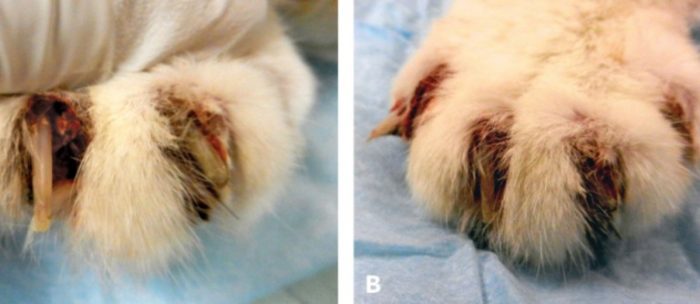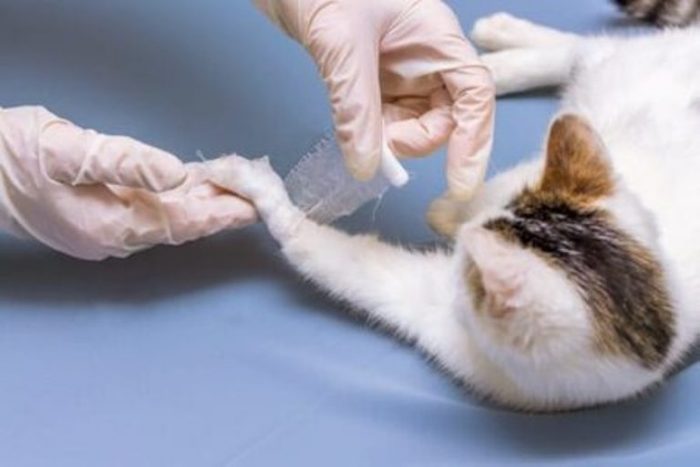Limping or lameness in cats can be caused by several factors. As a devoted pet owner, it can be very worrisome when one’s kitty seems to be in distress, and one doesn’t know the reason or how to assist them. While it’s advisable to visit the vet in cases of emergency, limping might not qualify your furry for a visit to the vet, especially when the cat limping symptoms and causes are well analyzed and monitored. In this article, we are set to explore all the possible causes, symptoms, and treatments of limping in cats.
Table of Contents
What is Cat Limping?
Cat limping can also be referred to as ‘cat lameness’. This situation occurs when a cat refuses to put pressure on any of its four legs due to pain or discomfort. Lameness or limping mostly happens due to injury in parts of the leg like the bones, joints, muscles, skin, ligaments, nerves, and many more.
This lameness can affect only one of the limbs, or it can be observed in several of them. It is also possible for it and disappear intermittently; however, this is heavily dependent on the reason for its appearance.
Cat Limping Symptoms
Cat limping symptoms are easily noticed by observant cat parents. Notable among them is the refusal to place any weight on the affected limb or limbs; besides, if the cat manages to settle some weight on those limbs, you will observe that it will be limping. Some owners might notice that their cats can’t walk or run normally like they used to, and at closer observation, the affected leg may be showing signs of swelling or inflammation around the cat’s joints.
Another cat limping symptom that might be noticed by owners is that the kitty might refuse to place the affected paw on the floor properly. There are cats that register their discomfort by walking at slower paces while some of them will display signs of difficulty jumping to heights and walking up and down the staircase. If a cat owner is observant, he or she can easily decipher this condition, since a limping cat will show general signs of pain and discomfort.
Why is my Cat Limping?

With that said about the cat limping symptoms, let’s delve into the possible causes of feline limping. When a cat limps, there could be a whole lot of issues involved, which can function as an indication of the severity of the situation. However, there are some general causes that can cause your feline friend to limp. Some of them include:
Arthritis
Just like humans who have advanced in age, cats, especially older ones, can suffer from arthritis. Another category of felines that are prone to this condition is the ones with a history of previous joint or bone injuries. More importantly, cats have mastered the art of hiding their pain: they are averse to making their discomfort obvious, so no matter how little or subtle the limp appears to be, it shouldn’t be ignored.
Moreover, arthritis in cats might be hard to diagnose as the symptoms might point to several other things. Recommendations are that most cats with arthritis cut down on their physical activity, as well as their daily functions. Pet owners who wish to have more time with their furry friends should heed this advice.
Broken bones, dislocation, or torn ligaments
A cat might jump down from a high place and land awkwardly. This can damage or affect the ligaments supporting its wrists and result in lameness. This calls for a visit to the vet who will proceed to give the cat a thorough physical exam before prognosis and possible treatment plan.
Ingrown Toenails
This can be a major cause of concern for the cat and cat owners as it can be hard to see. This is especially true for cats with long furs; those dense furs tend to cover the toenail, making it impossible for you to know when to clip. Moreover, a cat with arthritis in its toes might avoid scratching the post, which can lead to ingrown toenails. Being averse to using the scratching post can be taken as one of the cat’s limping symptoms.
Overexertion
A hyperactive cat can overexert itself, especially during outdoor playing, which can result in a temporary limping bout. This usually disappears within a very short time as the cat gets rested.
A wound on footpads or broken/damaged claw
This is one of the easiest ways for a cat to encounter a problem with its legs. An overexcited cat can suffer from a broken claw by jumping from a high place. This seems to happen more regularly; though cats are natural climbers, a momentary distraction can lead to an accident.
Neurological and genetic disorders, bone cancer
Although this isn’t common, any neurological disease can affect the way a cat moves. Cancer and tumors can also cause lameness in cats.
Infections and inflammatory diseases
A cat’s nail beds can get infected, which may cause deformed and rusty nails. There are some deeper infections that cause an abscess to appear under the skin.
Treatment for Cat Limping

As highlighted earlier, not every cat limping symptom requires a visit to the vet. To manage cat limping symptoms, especially after confirming that there are no broken bones, dislocated joints, or torn ligaments, cat owners can limit their activity and allow them to rest quietly without disturbance.
Read Also: Cat Sneezing: What You Need To Know
Moreover, a limping cat should be monitored closely. An owner should watch how the cat manages the affected leg and how much pressure it’s willing to bear on the leg.
If the cat is in severe pain, it might not be advisable to examine the leg, especially without the help of an expert as cats in pain can bite and scratch even the owners.
In case the cat limping symptoms persist, you might want to contact your vet to help get the right diagnosis and treatment.
Generally, another way to avoid lameness in cats as they grow and advance in age is by managing their weight. Overweight cats are prone to lameness, so cat owners are advised to constantly revamp their feline friend’s diets and introduce nutritional supplements that help support the joints as they advance in age.
